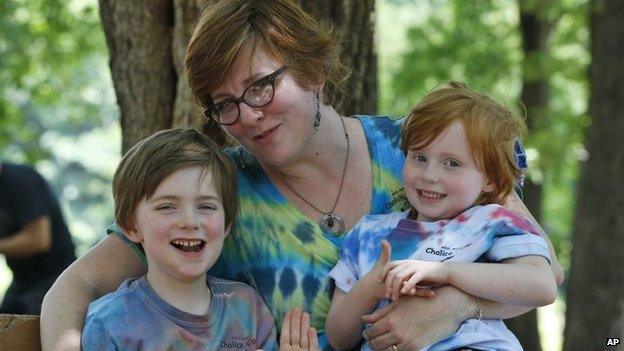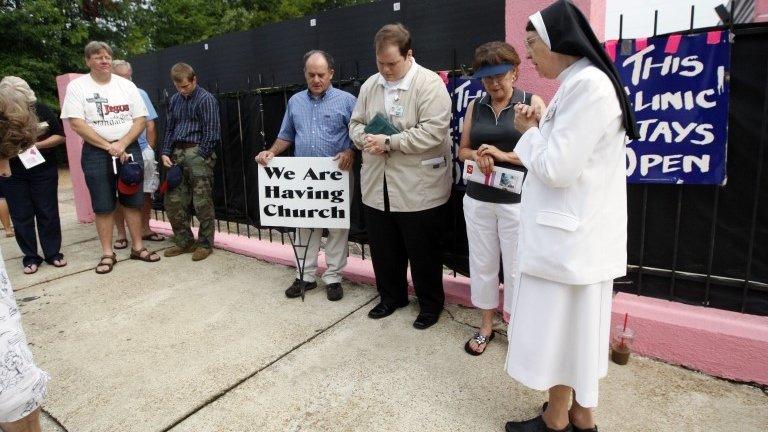Abortion rate down 12% in US
- Published

The fall in abortions is due to different reasons, depending on who is asked
The rate of abortions has declined across almost all of the US since 2010, a new survey from the Associated Press has found.
Abortions have decreased 12% in both liberal and conservative-run states.
Laws across US states make it harder or easier to obtain contraception or get an abortion.
One factor behind the abortion decline is the fall in the teenage pregnancy rate, which reached its lowest mark for decades in 2010.
Supporters of abortion rights say the fall in terminations is due to increased access to contraceptives.
Opponents says more women are carrying unplanned pregnancies to full term.
In Indiana, Missouri, Ohio and Oklahoma - states notorious in the US for being aggressively anti-abortion - abortion has dropped 15% since 2010.
The situation in liberal states like New York, Washington and Oregon mirrors that trend, even though it is easier to get an abortion in those states.
In 2010, the teen pregnancy rate in the US was the lowest it has been in decades, and has continued to drop, which could be one reason for the decrease in abortions.

In Oklahoma, mother Heather Hall wants better sex education for young people
Charmaine Yoest of Americans United for Life, one group promoting restrictive abortion laws, said the drop is correlated with pregnant women having an "increased awareness of the humanity of [babies] before [they are] born".
In Oklahoma, where the rate fell 19% from 2010 to 2013, a new law required women to wait at least 72 hours before receiving an abortion.
The state also banned a certain second-trimester procedure that opponents said dismembered the foetus.
Tony Lauinger, the chairman of Oklahomans for Life, said these laws helped increase public understanding of what abortion really means.
But abortion-rights advocates say strict laws are not needed to lower the abortion rate in the US.
"Better access to birth control and sex education are the biggest factors in reducing unplanned pregnancies," said Planned Parenthood Federation of America.
Campaigners say intrauterine devices are one form of contraception reducing pregnancy, especially teen pregnancy, at a dramatic rate.
An initiative to give the devices free to teenagers helped the Colorado teenage birth rate decline by 40% in less than five years.
- Published11 August 2014

- Published3 February 2014
